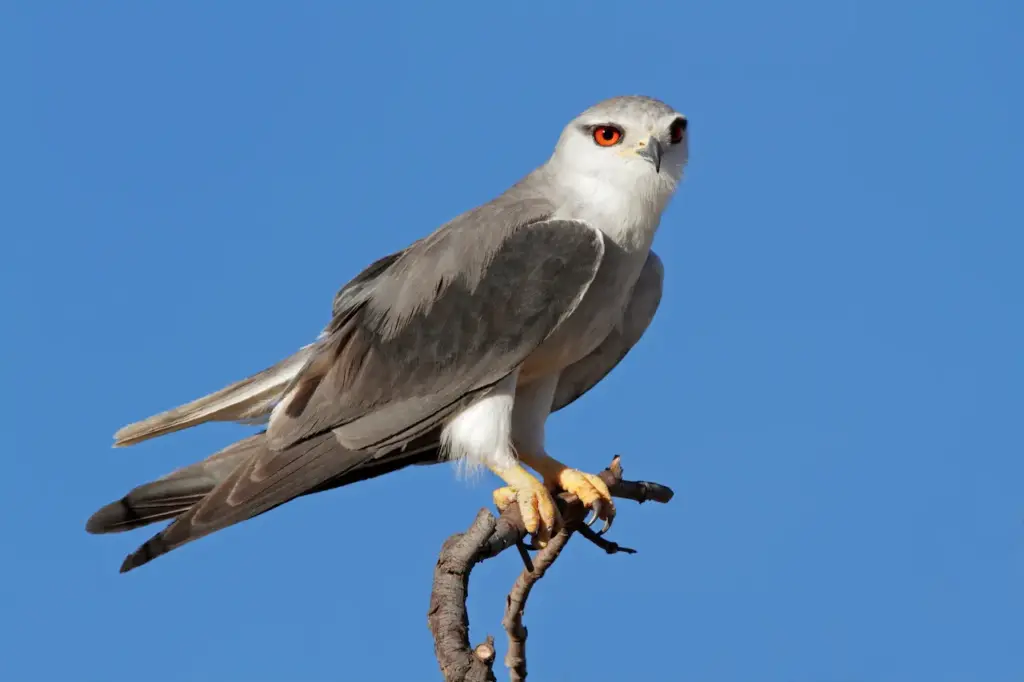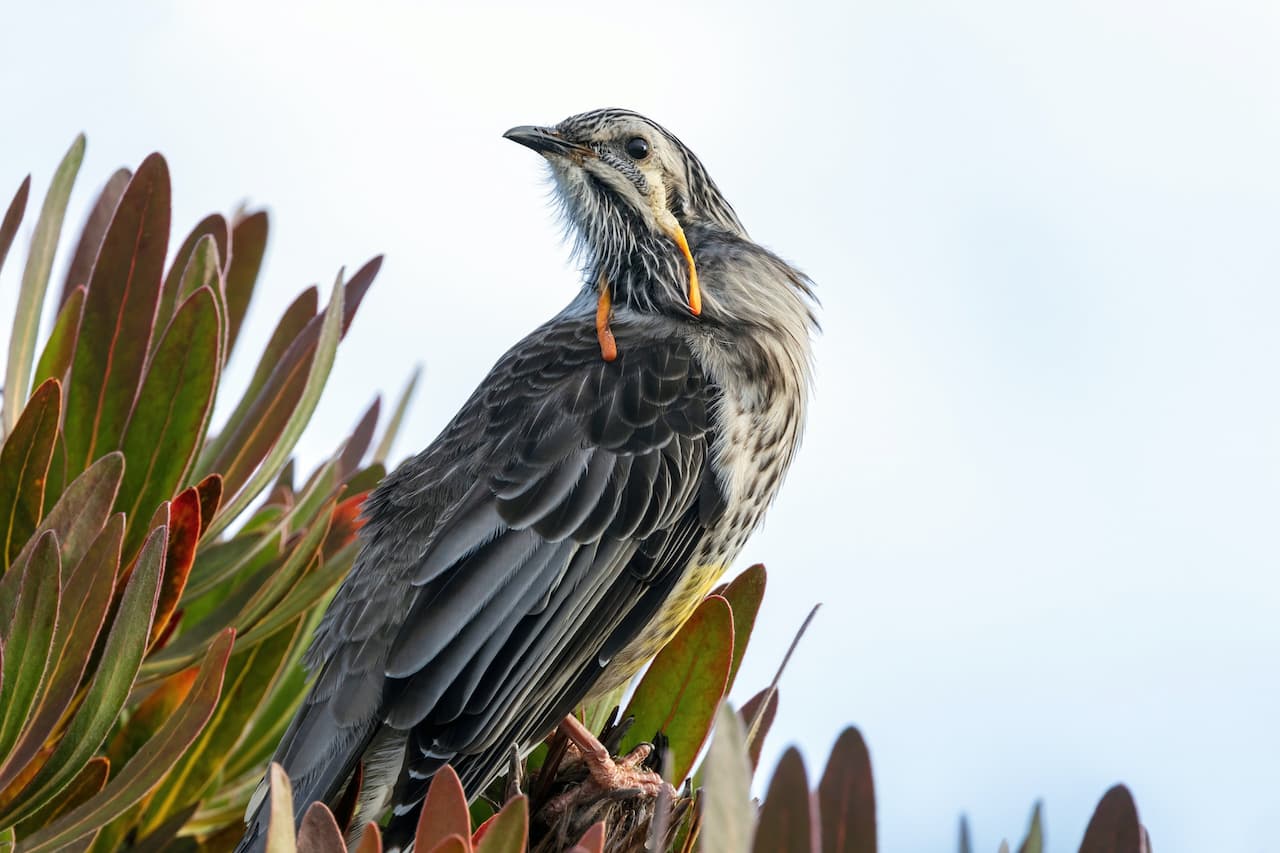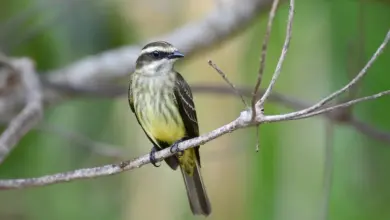Black-shouldered Kites
Black-shouldered Kites
The Black-shouldered Kites (Elanus axillaris) are graceful, mostly white and grey-plumaged birds of prey found in open habitats throughout Australia.

These raptors are closely related to the similar African Black-winged Kites (Elanus caeruleus) and the North American White-tailed Kites (Elanus leucurus), both of which are also sometimes referred to as “Black-shouldered Kites.”
These three species were in the past considered conspecific (the same family). However, in 1992, Clark and Banks provided convincing morphological evidence that these species should be separated, which has been generally accepted.
Not only are these beautiful raptors popular with birders and nature enthusiasts, but these specialist predators also play an important role in keeping rodent populations down.
Distribution / Habitat
The Black-shouldered Kites occur throughout Australia but are most common in the fertile southeast and southwest corners of the mainland, as well as in southeast Queensland in the north.
They are the most commonly recorded birds of prey in the wheat belt of southwestern Australia.
They are only accidental visitors to northern Tasmania and the islands of Bass Strait in the north and Torres Strait in the south of the mainland.
They generally prefer open grasslands with scattered trees, wetter savannas, agricultural lands, and open woodlands with tall grass. They generally avoid Australia’s deep desert areas or other arid areas except following rain or movement of flood waters. Their numbers typically increase in response to sudden increases in rodent populations.
They are resident in coastal areas with higher rainfalls and their numbers are irregular and varied in the drier parts of their natural range.
Description
Size
Black-shouldered Kites measure between 13.8 – 15 inches (35 – 38 cm) in length (including the tail), and they have a wingspan of 31.5 – 39.4 inches (80 – 100 cm). Their average weight is 10.26 oz or 291 grams.
Plumage Details / Adults
The plumage is mostly pale grey above, except for a white head, prominent black “shoulders” and wingtips, and below, it is white. There is a black “comma” above each eye.
Other Physical Details
Their wings are long and pointed. The tail is double-rounded. The eyes are red. The black bill is short with a sharp, hooked tip to the upper beak. Their nostrils and the cere (skin at the base of the bill) are yellow, as are the legs and feet.

Gender ID
Males and females look alike, except for females generally being slightly larger in size. In some instances, females have been reported to be up to 15% heavier than males.
Juvenile Description
Immature birds resemble adults but can be identified by the rusty brown wash on the head and upper chest, the mottled buff-brown back and wings, prominent white wing tips, and brown eyes.
Similar Species
The Black-shouldered Kites can be separated from the Letter-winged Kites by the distinctive black “comma shape” above and behind each eye and the white crown (grey in the Letter-winged). They also have all-white underparts (except for the black shoulder patches and dark wing tips) and lack the black underwing ‘w’ or ‘m’ pattern seen in the Letter-winged.
Diet / Feeding
The Black-shouldered Kites mostly feed on mice and other mouse-sized mammals, which make up about 90% of their diet. An adult consumes about 2 – 3 mice a day.
They will also take rats, small reptiles, birds, large insects (i.e. grasshoppers), and, on occasion, even rabbits (particularly when feeding hungry nestlings).
They usually hunt early morning and late afternoon but may take advantage of opportunities at any time of the day. Hunting is done singly or in pairs.
They hover with their wings held upright in a V-shape, before dropping down and grabbing prey with their powerful talons (claws).
The prey could be eaten in flight or while perched.
Breeding / Nesting
Black-shouldered Kites form monogamous pair bonds.
Most breeding activities occur between August and January but may occur earlier or later provided that plenty of food is available (typically whenever mouse populations increase). Typically, one brood is produced in a season, but whenever conditions are favorable, a second clutch may be laid.
Pairs engage in single and mutual high-circling courtship display flights during which the male may perform something known as “butterfly flight” which involves flying slowly with stiff exaggerated flaps and diving at the female. As part of this courtship flight, the female flips upside down and accepts food with her talons (claws). They may also lock talons and tumble downwards and release just before landing. These displays are accompanied by constant calling.
For about two weeks, both parents construct the large, untidy platform nest out of sticks and lined with green leaves, other plant matter, felted fur, and — occasionally — cow dung. Initially, nests measure 11 – 15 inches (28 – 38 cm) across, but as they are reused and refurbished over subsequent seasons, they may grow to 30.7 inches (78 cm) across.
These nests are typically placed on tall trees, but they may also use artificial structures, such as bridges or power poles – about 13 – 115 feet (4 – 35 meters) above the ground. They may also use the abandoned nests of Australian Magpies, crows, or ravens.
They usually nest solitarily; however, in areas with abundant prey, these birds of prey may nest in loose colonies.
The average clutch consists of 2 – 5 eggs, but in most cases, 3 – 4 eggs are laid. The eggs are dull white with red-brown blotches. The incubation period is about 30 – 31 days. The female takes care of the eggs and the hatchlings with the occasional assistance of the male. Initially, the chicks are only covered with a soft down and completely depend on parental care. The male will do most of the hunting and take prey to the nest for both the female and the young.
The chicks leave the nest when they are 33 – 38 days old and the young are typically able to hunt and feed themselves within one week of fledging, and are fully independent a month later.
Juveniles often disperse widely from the home territory – in some cases as far as 600 miles (1,000 km) from the original nest site.

Calls / Vocalizations / Sounds
Generally silent, the Black-shouldered Kites’s vocalizations are mostly heard during the breeding season:
Primary call heard in flight or when hovering: clear whistled ‘chee, chee, chee’
Perched: hoarse wheezing ‘skree-ah’
Contact calls between pairs: short high whistles
Females / Older Juveniles: deep, soft, frog-like croak.
Other Calls: harsh vocalizations when alarmed; harmonic, chatter, and whistle vocalizations in other contexts.
https://www.xeno-canto.org/embed.php?XC=105513&simple=1
Alternate (Global) Names
Chinese: ???, ????? … Czech: Lun?c australský … Danish: Australsk Blå Glente
Dutch: Australische Bastaardwouw / Grijze Wouw .. Estonian: Austraalia hõbehaugas … German: Australien-Gleitaar, Australischer Gleitaar … Finnish: Australianliitohaukka … French: Élanion d’Australie … Hebrew: ??? ????????? … Italian: Nibbio bianco australiano / spallebianche … Japanese: katagurotobi, oasutorariakatagurotobi … Norwegian: Australglente … Polish: kaniuk australijski … Russian: ????????????? ??????????? ??????, ??????????? ???????? ?????? … Slovak: luniak striebristý, luniak striebristý (luniak austrálsky) … Spanish: Elanio Australiano, Elanio de hombros negros … Swedish: Australisk svartvingad glada




